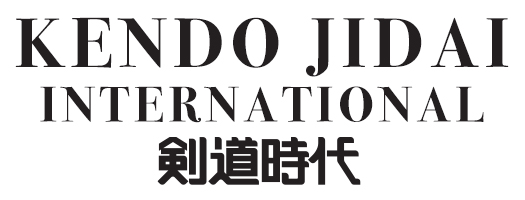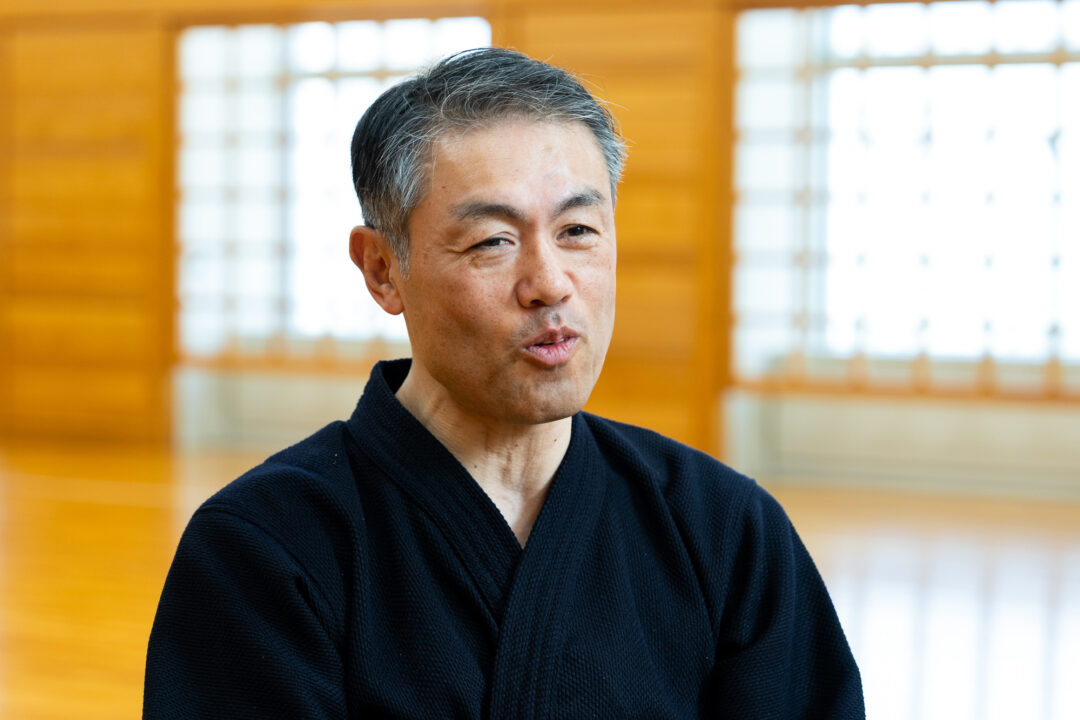2025.10 KENDOJIDAI
Photography: Sasai Takamasa
*Unauthorized reproduction or use of any images in this article is strictly prohibited.
“In Kendo, what is most important is to first be able to faithfully put into practice what is written in the textbooks,” says Eiga Naoki, three-time consecutive winner of the All Japan Invitational 8th Dan Kendo Championship. Applied techniques can only exist on the solid foundation of basics. In daily practice, it is essential to place emphasis on correctness, and from there, connect to application.
Eiga Naoki, Kyoshi 8th Dan
Born in 1967 in Kimobetsu, Hokkaido, Eiga Naoki advanced from Tokai University Daiyon High School (now Tokai University Sapporo High School) to Tokai University before joining the Hokkaido Prefectural Police. Over the course of his career, he has claimed numerous titles, including victory at the All Japan Kendo Championship, four team championships and an individual championship at the World Kendo Championships, triumph at the All Japan Prefectural Championship, two wins at the All Japan Invitational 7th Dan Kendo Championship in Kumamoto, and four victories at the All Japan Invitational 8th Dan Kendo Championship. He currently serves as Director of the Technical Instruction Office within the Training Division of the Hokkaido Prefectural Police Headquarters and as Head Instructor of the Hokkaido University Kendo Club. He holds the rank of Kendo Kyoshi 8th Dan.
Do Not Put Ingenuity Before Fundamentals
Pursue Principles First
Kendo practice begins with warm-up exercises, followed by Suburi, and once the Men is put on, proceeds to basic keiko such as Kirikaeshi and Uchikomi, then to Kakari-geiko and Jigeiko. The structure of these practice menus is largely the same, whether for children, youth, or adults. However, depending on one’s level of maturity and training, there are specific elements that should be acquired, and I believe these correspond directly to the standards used in Dan examinations.
In regular practice, what we must first keep in mind is to firmly acquire what is written in the official manuals. For example, The Official Guide For Kendo Instruction describe how to grip the Shinai:
“The left hand should be placed so that the little finger wraps fully around the end of the Tsuka, gripping from above. The little finger and ring finger should hold firmly, the middle finger lightly, and the index finger and thumb should only rest gently.
The right hand should grip in the same way as the left, with the little finger and ring finger firm, the middle finger light, and the index finger and thumb resting gently. The right fist should be positioned just slightly away from the Tsuba.”
Even if one maintains the correct grip during Suburi or Uchikomi practice, have you ever noticed that in Jigeiko or matches, the grip suddenly changes? Jigeiko and matches involve applied movements, which are different from basics, but if the connection between them breaks, then Suburi, Uchikomi, Jigeiko, and the actual test or match will not be linked together as a single continuous thread. Ingenuity and adaptation are, of course, important. However, if ingenuity comes first without a foundation, it leads to a personal, idiosyncratic style without the backing of fundamentals.
In Kendo, there are four target areas for strikes: Men, Kote, Do, and Tsuki. Throughout my career I have aspired to acquire all techniques, but strikes such as the one-handed Tsuki or the right Do, which I was able to use successfully in the 8th Dan Championship, are techniques rarely practiced in basic training. Since they are considered applied techniques, I usually attempt them in Jigeiko and other forms of practice.
In Kendo, simply hitting a target area does not constitute a valid strike. There are fundamental requirements and elements that define a Yūkō-datotsu (valid strike). I believe it is essential to keep these principles in mind and to pursue both basics and applications at a high level.
The Importance of Consistency
Bringing Kendo into Everyday Life
The rest of this article is only available for Kendo Jidai International subscribers!



